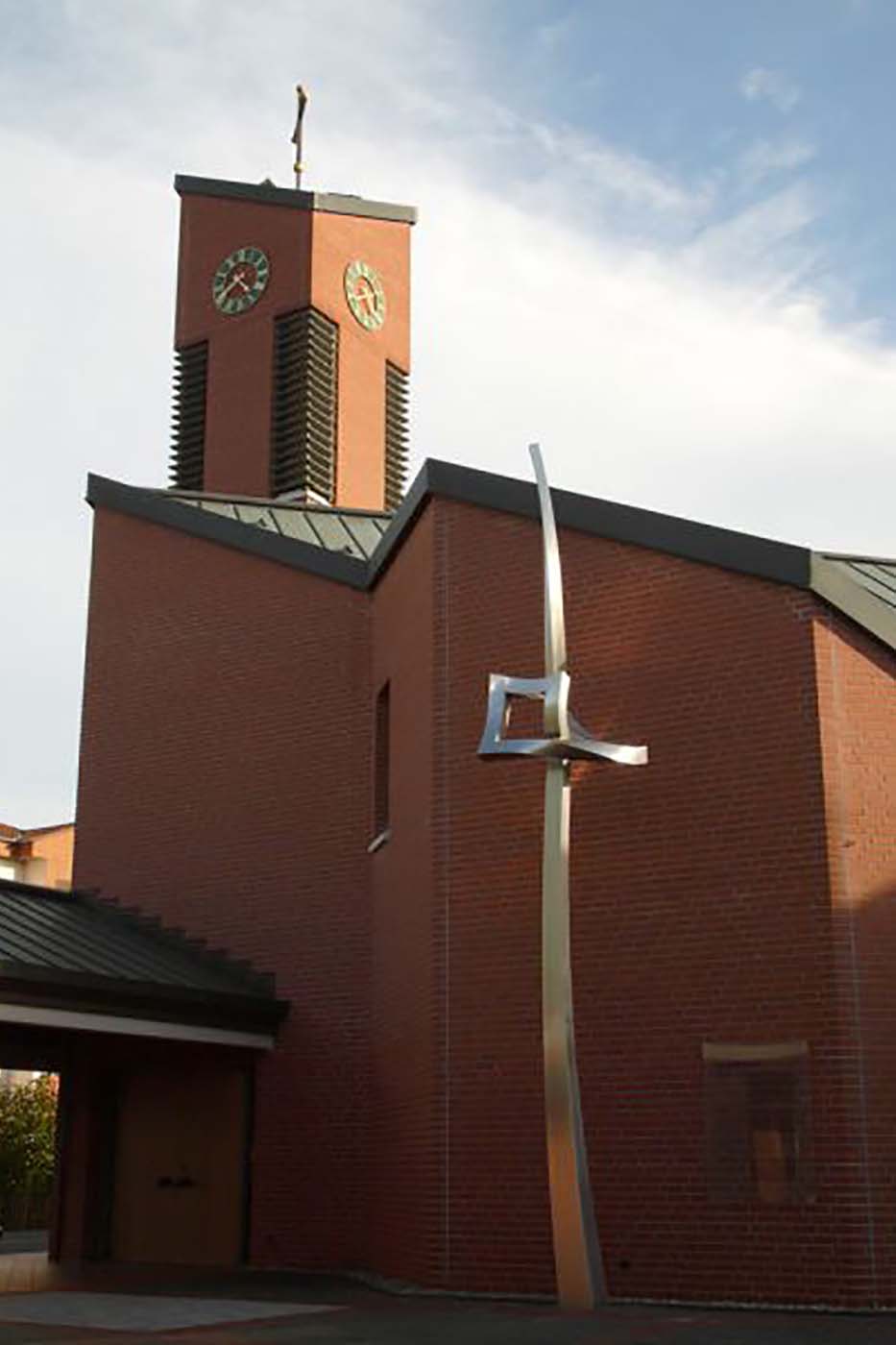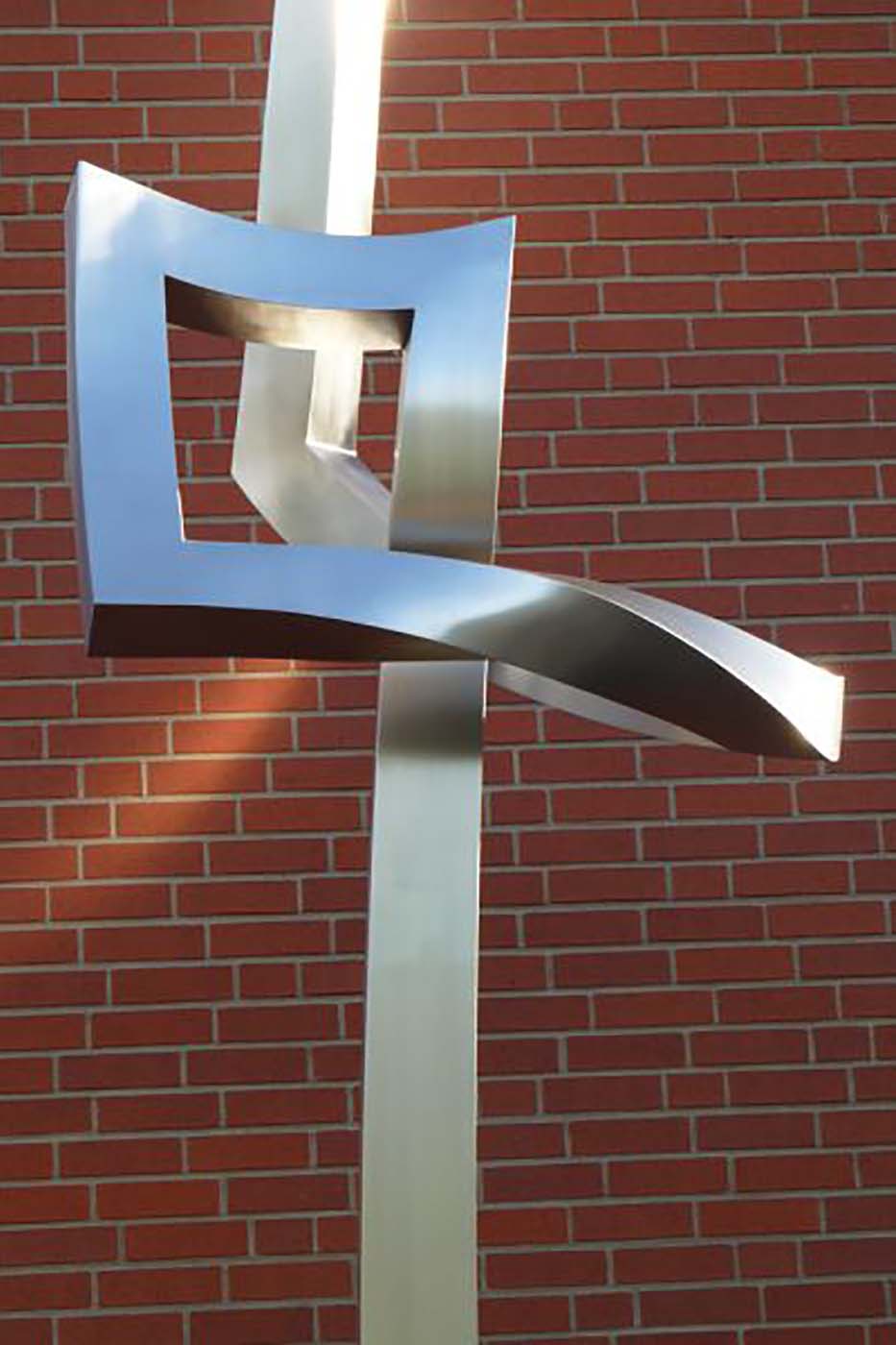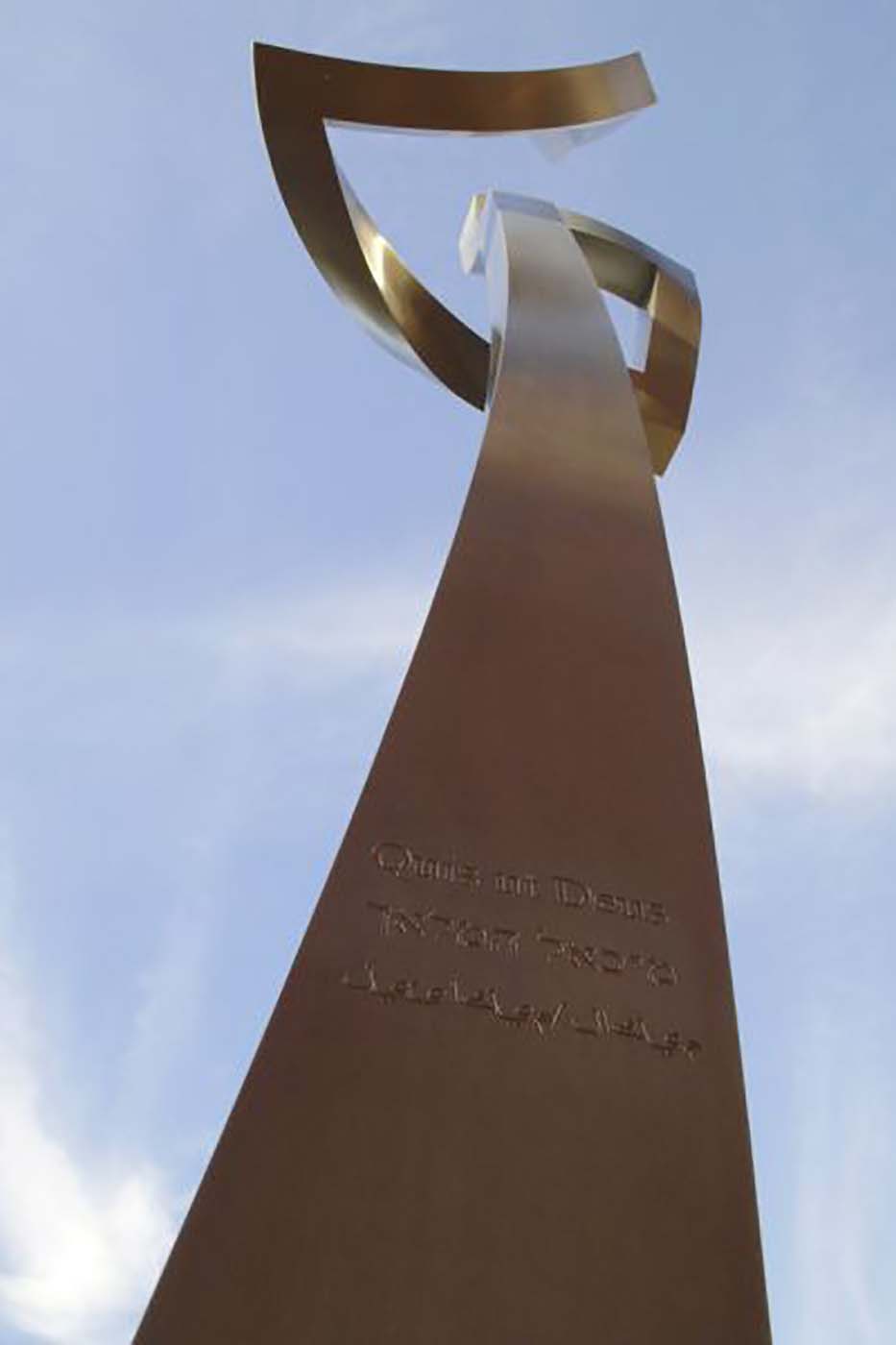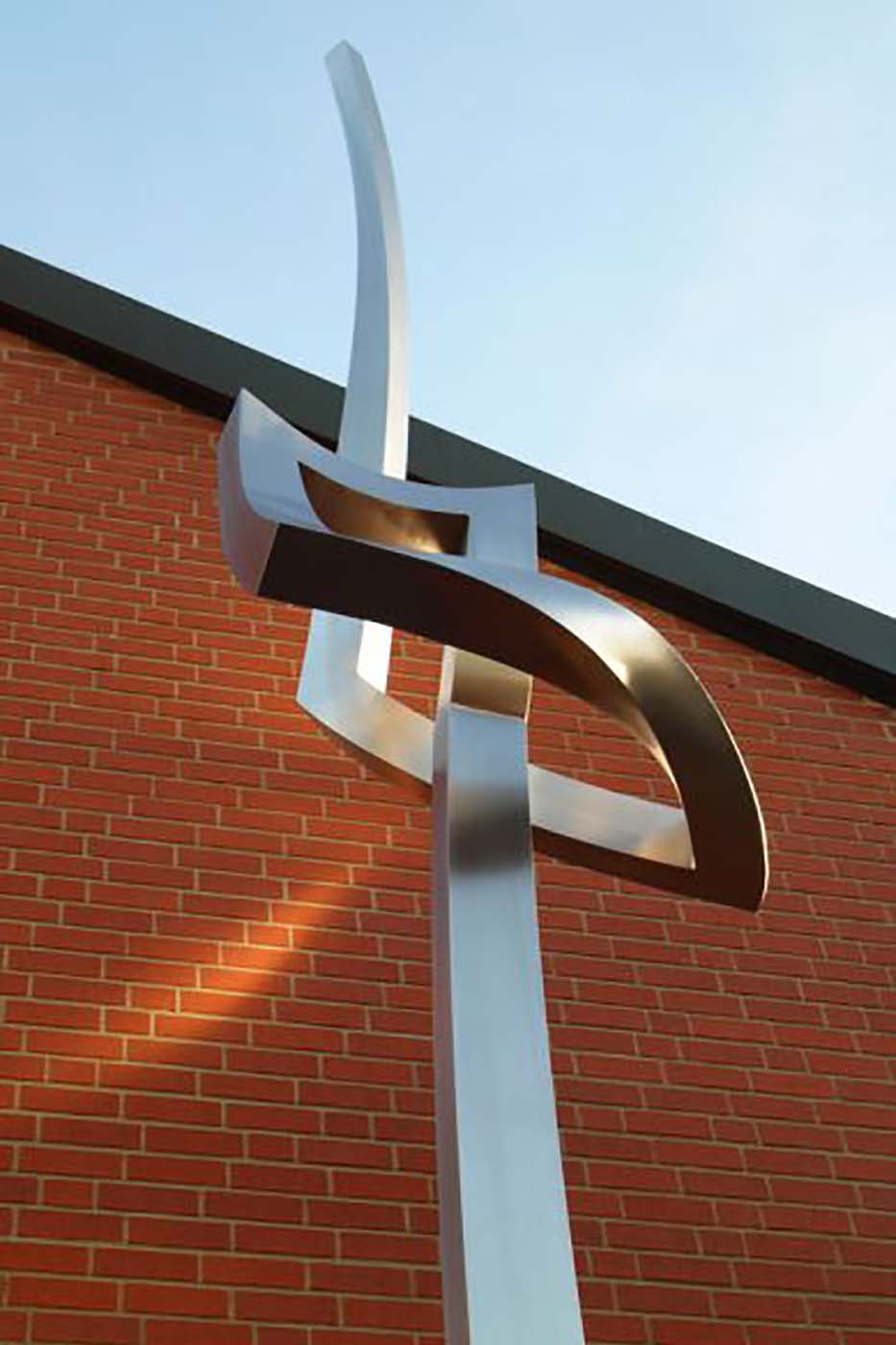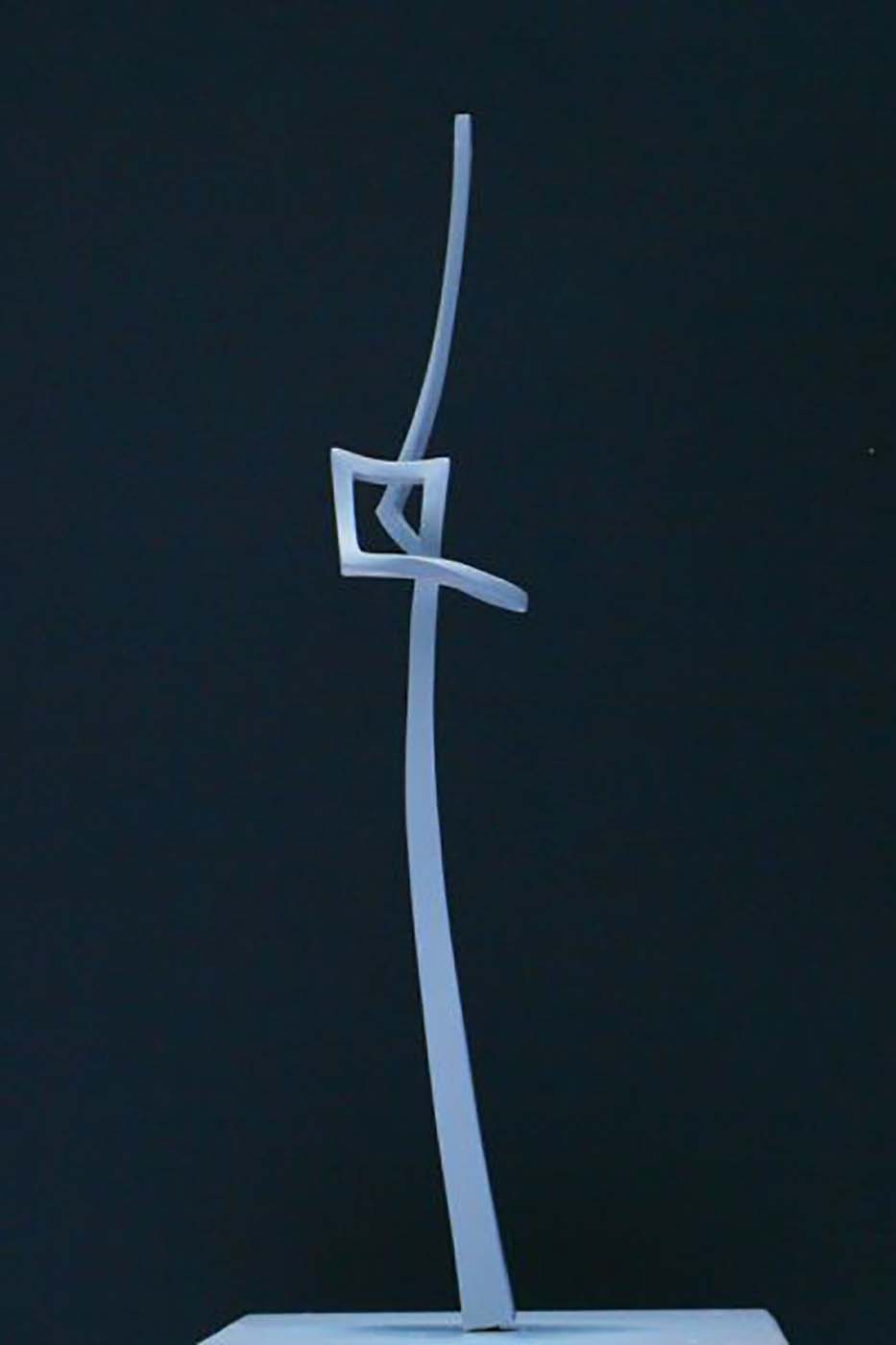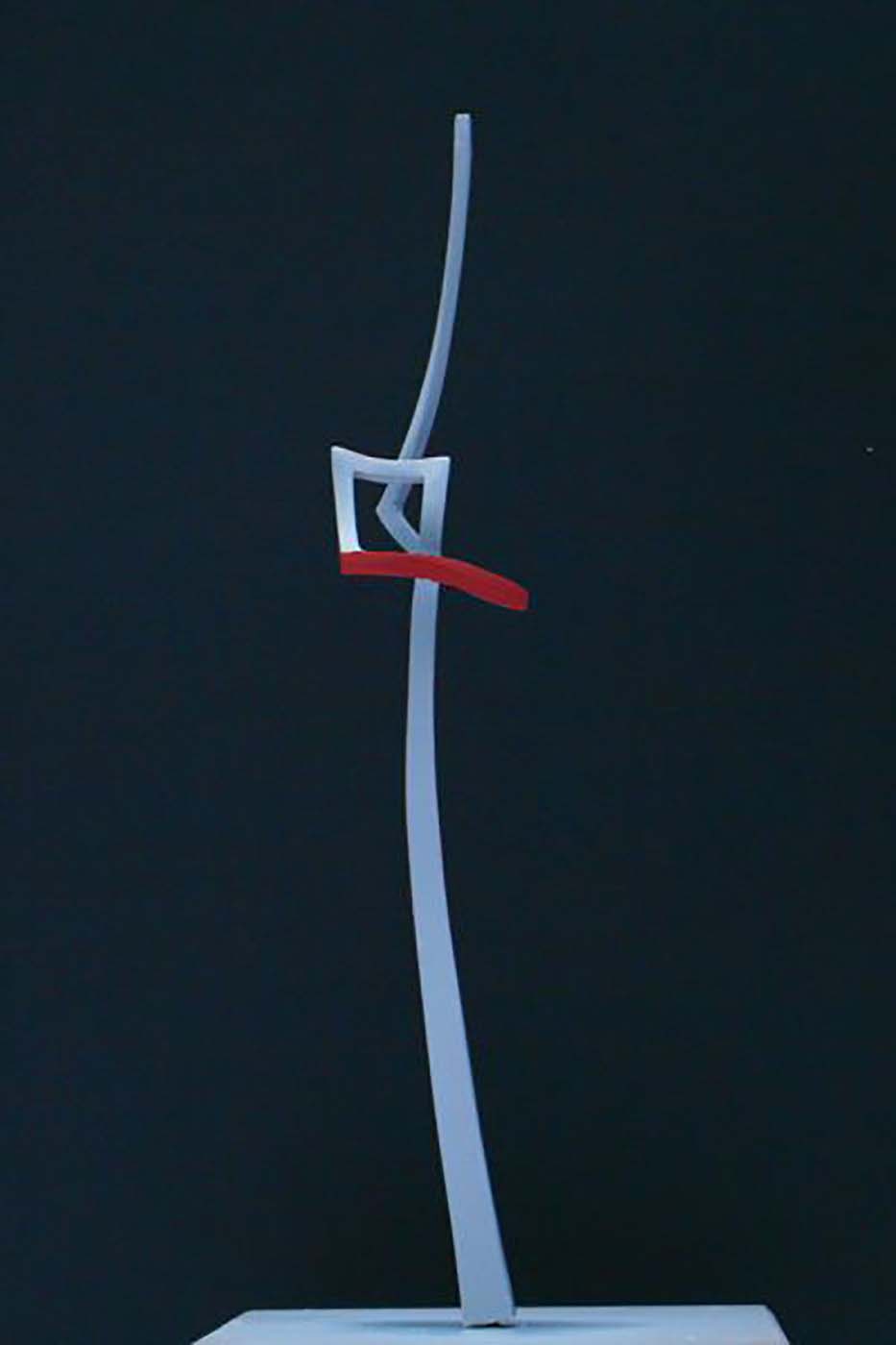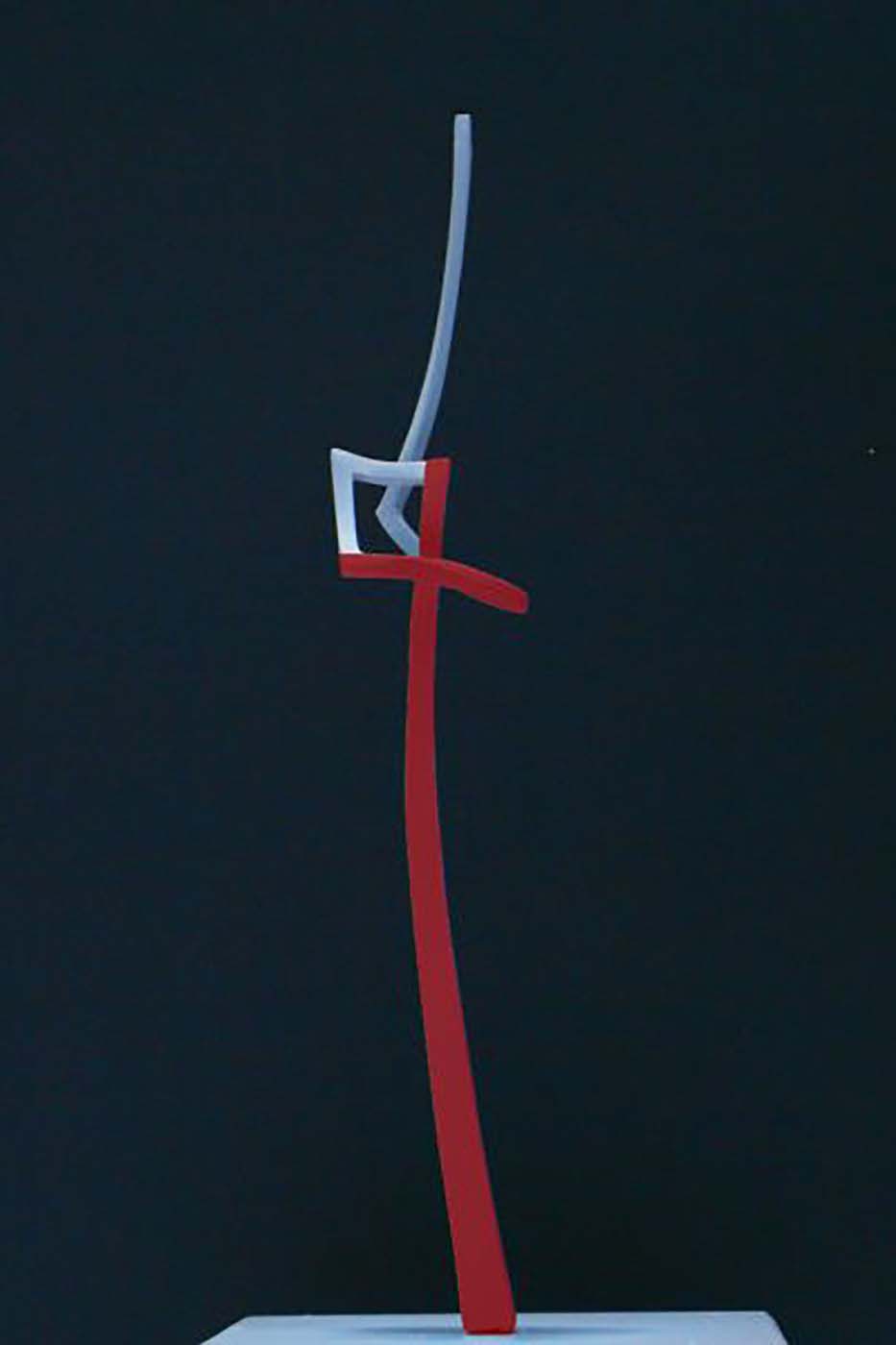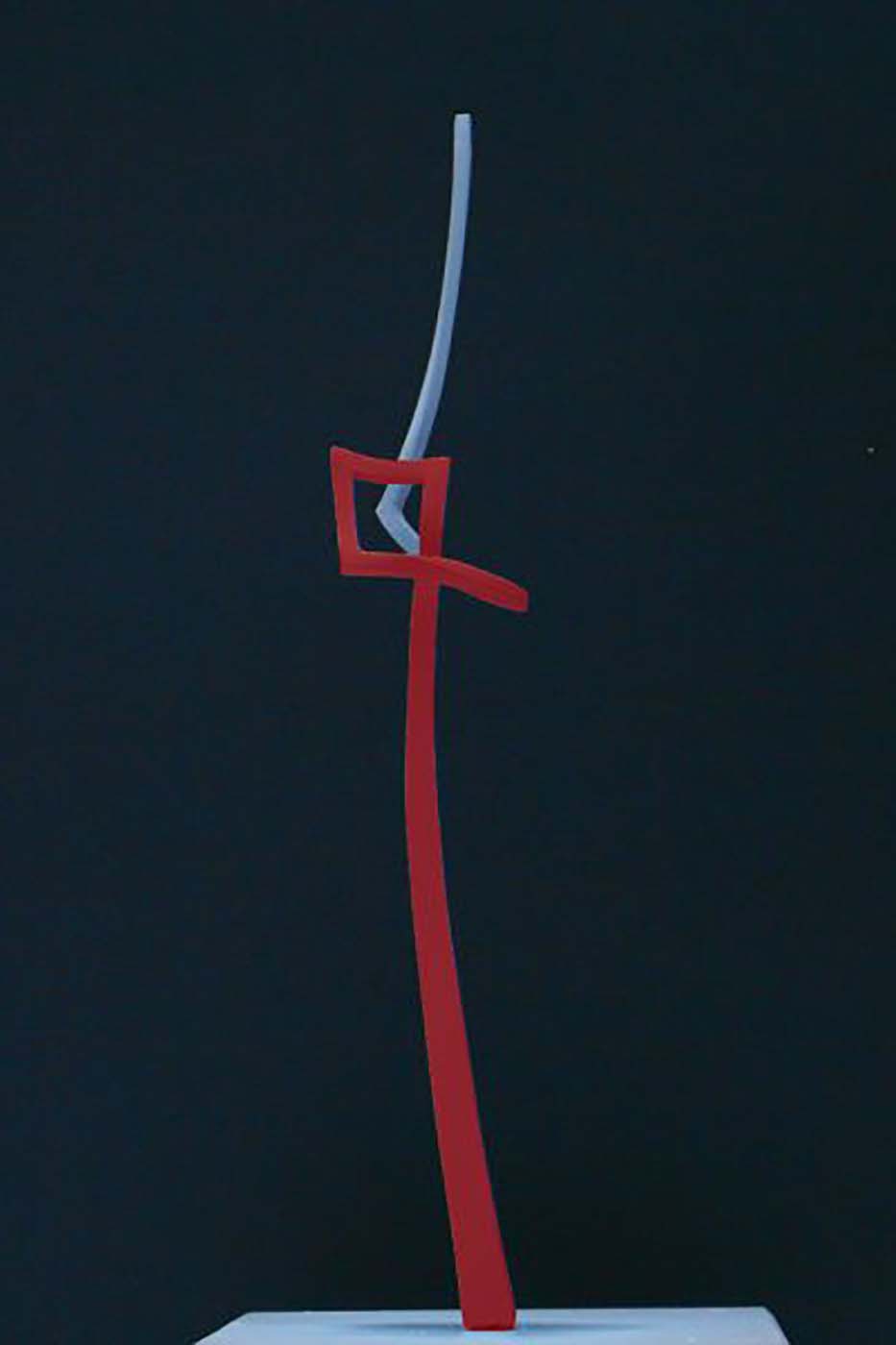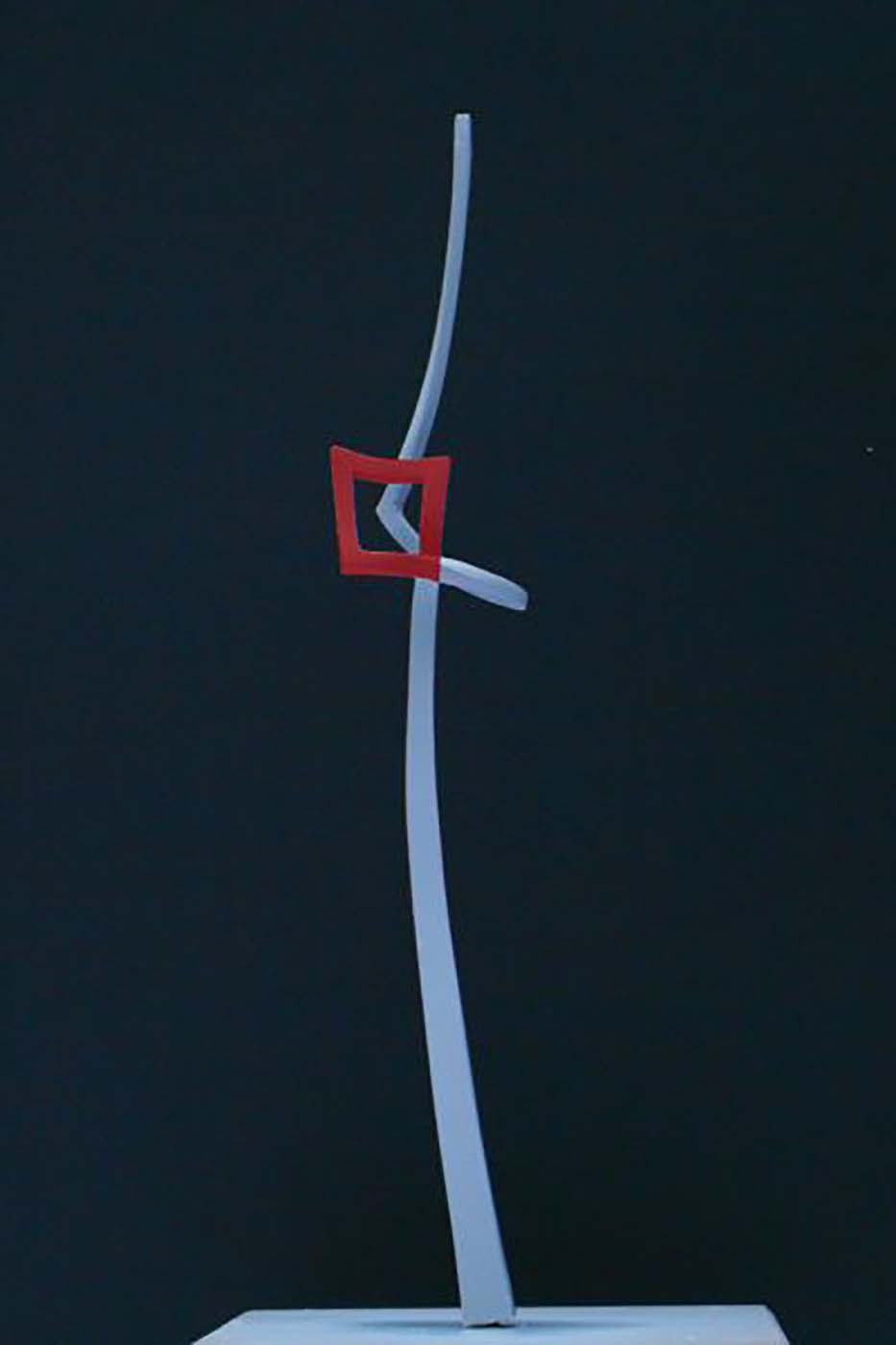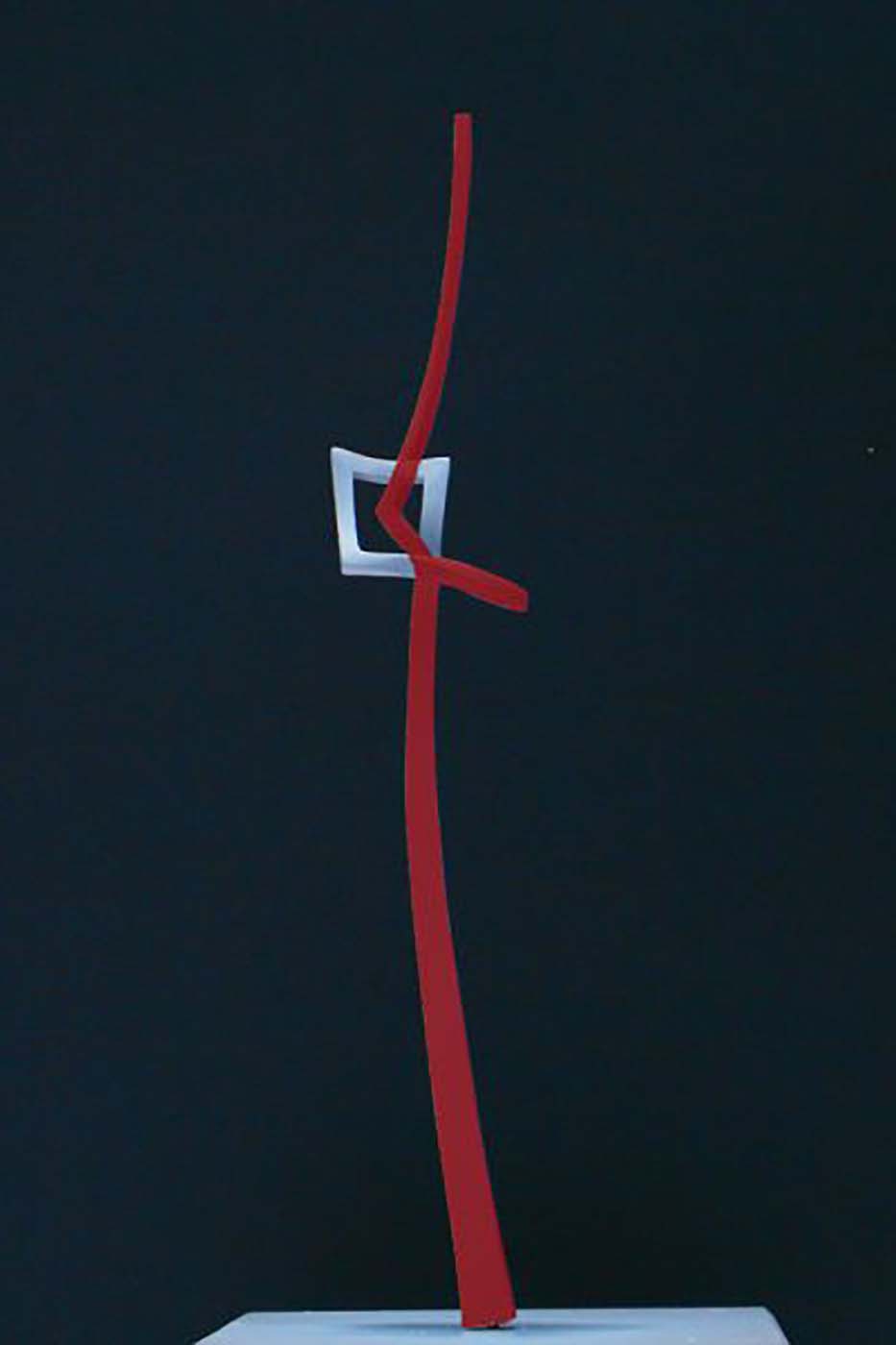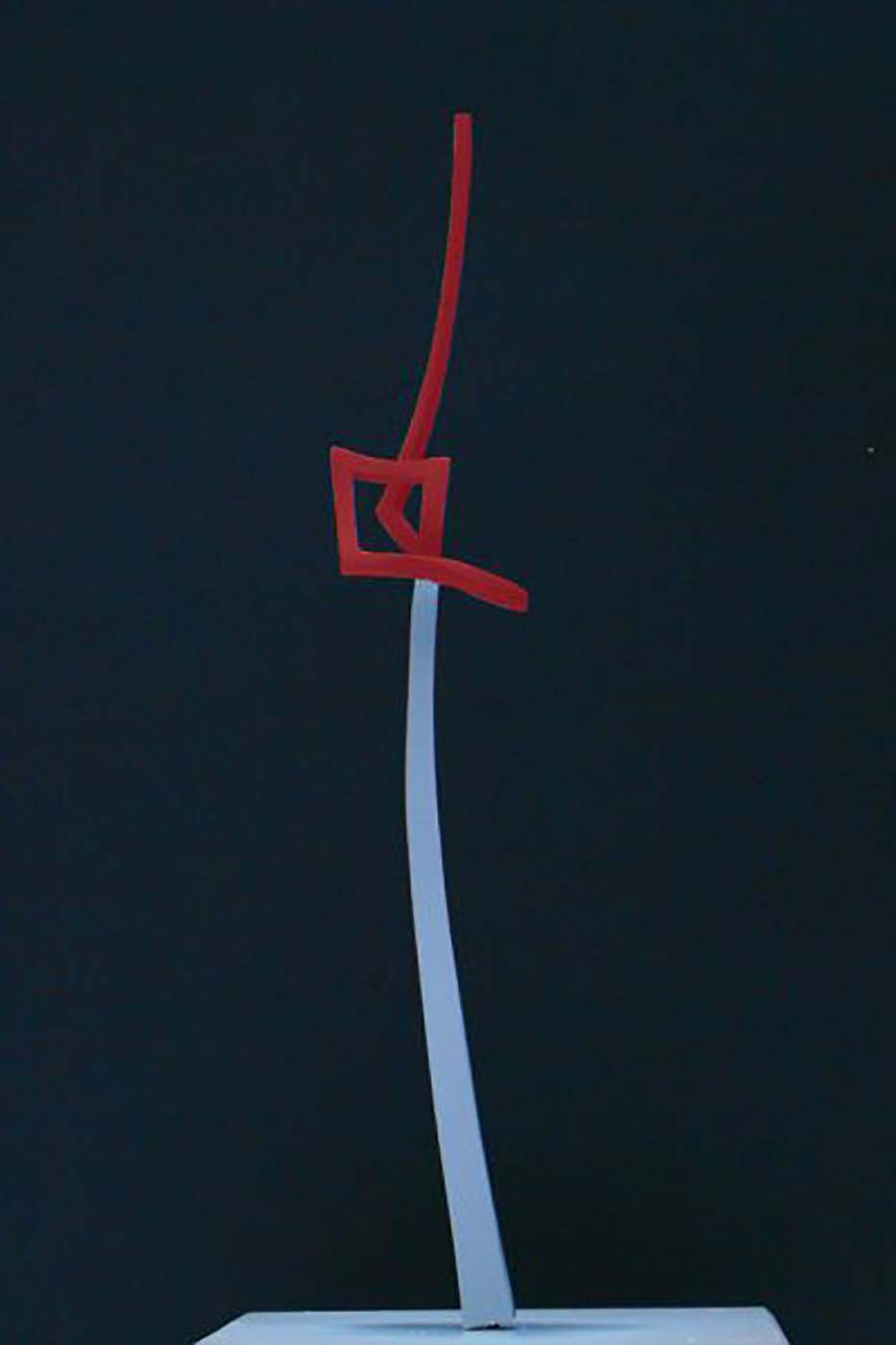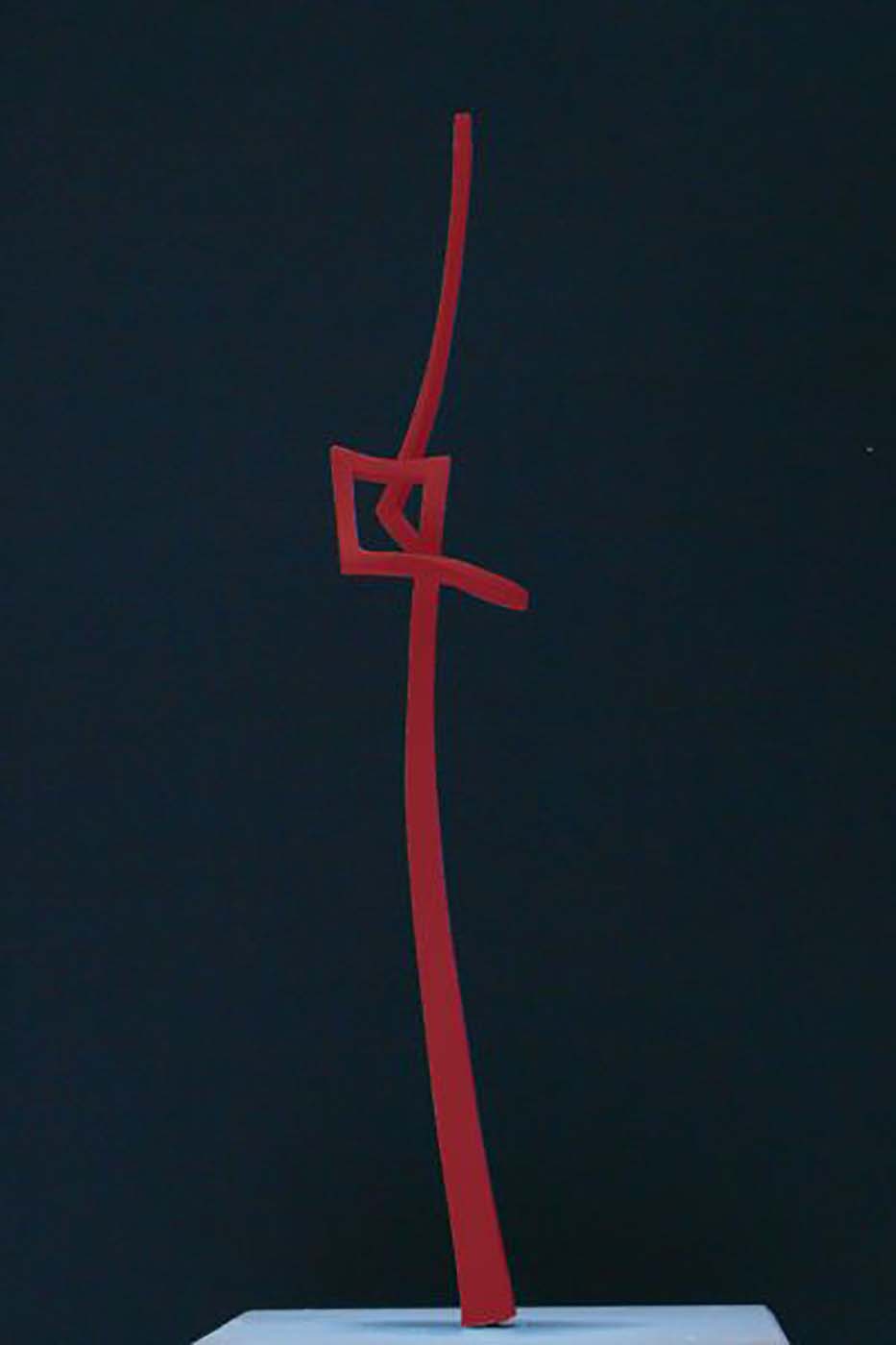St. Michael
The fundamental concept of the sculpture within the context of the modern architecture of the church was to express the character and symbols of Archangel Michael without making use of traditional imagery. That resulted in a shape with sweeping lines that serves as a bridge between heaven and earth. The sculpture is dominated by the vertical, by movement thrusting upwards: the power of faith. However, the vertical element has not been executed in a straight line: it resembles a sword flashing from heaven to earth like lightning, also evoking associations with a cross. The Christian cross and a square that can be perceived as a gate to heaven balance each other out depending on the angle of view. This is where the fate of man is decided – with the path leading either upwards “into the holy light” or downwards into eternal hell. At the same time, it elicits the idea of a key that can open this gate. So this artistic debate combines all of the essential symbols that are linked to the figure of Archangel Michael: the cross, the sword, the scales, the lightning bolt, the gate to heaven and the key to open up the gate.
The Archangel
According to tradition, Michael, the highest ranking archangel and the patron saint of the Roman Catholic church in Niederrodenbach, is the angel that pushed Lucifer out of heaven before the world was created, subsequently expelled Adam and Eve from Paradise and guarded the Tree of Life. Michael divided the Red Sea during the flight from Egypt and led the people of Israel to the Promised Land. At the Last Judgement, he is supposed to finally defeat Satan and lead the souls “into holy light”. His name was originally derived from the Hebrew tradition. The Koran is also familiar with the saintly Michael known in the Jewish-Christian tradition. The last words that Satan hears from the archangel before he falls are said to have been “Who (is) like God?” - a literal translation of the Hebrew name Mi-ka-el. St. Michael was also the patron saint of the Holy Roman Empire. His feast day is September 29th and his symbols are a sword and scales.
About Archangel Michael next to his church in Niederrodenbach:
„ …
[The work of art] achieves its compelling effect through the elegance of its shape, through its relationship to the church structure, seemingly a part of it and but nevertheless clearly differentiated, a true expression of theological aesthetics. What does the Confession of Chalcedon from the year 451 state? The two natures of Christ – the human and the divine – are not intermingled and not separate from one another. Thus the building, which was erected 25 years ago, and the new abstract sculpture that we have just unveiled are not intermingled but are nevertheless not separate from one another.
Quite a few people in the parish and even outside of it would have preferred an angel in human form with wings. That is understandable. But angels are a purely spiritual reality. It already was Michelangelo who took away their wings. In his fresco of “The Last Judgement” he portrays them all in that fashion: as nude male figures without wings. In order to show that they are immaterial in nature and therefore cannot suffer, there is one angel who wanted to take his place on the cross of Christ, but he slips off the wood because he does not have a physical body and cannot suffer.
In our era, artists have gone one step further since the last century. It was Paul Klee who gave angels an abstract linear shape in his drawings at Bauhaus. Then after World War II, entirely abstract ... metal figures portraying the Archangels Gabriel and Michael … were erected. Purely spiritual beings do not have faces, they have no body and definitely do not have any wings. Using abstract shapes is the most effective way to make reference to them. Artists have become convinced of that. Admittedly, they are prophets who already anticipate the time that is to come.
So what are we to say to those people who still cling to the old traditional shapes and do not want to do without them in their religious life? There are three responses to that. Art does not merely aim to please: it strives to provide inspiration for thought. Sooner or later, those who adhere exclusively to the antiquated and the conventional will become isolated and withdraw from life, which always entails challenges and communion with what is still unfamiliar. Finally, God himself is always new in all eternity.
There is old and new art that is constantly surprising, and God makes use of both in order to reveal himself to us. ... Art must be newly created continuously; it is a challenge for the beholder and at the same time an invitation to open oneself even further and allow oneself to be enriched.”
